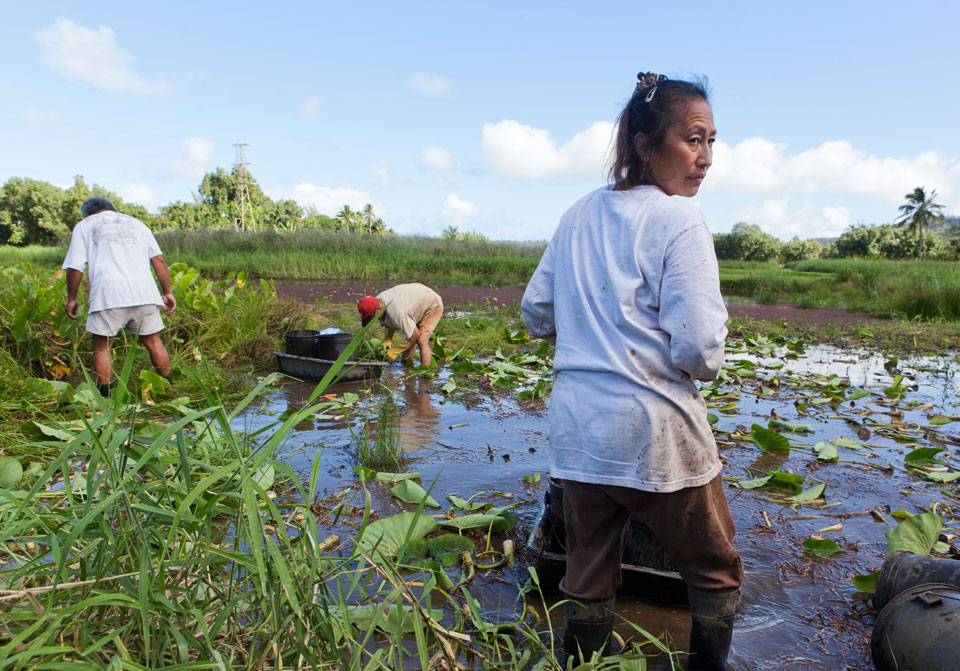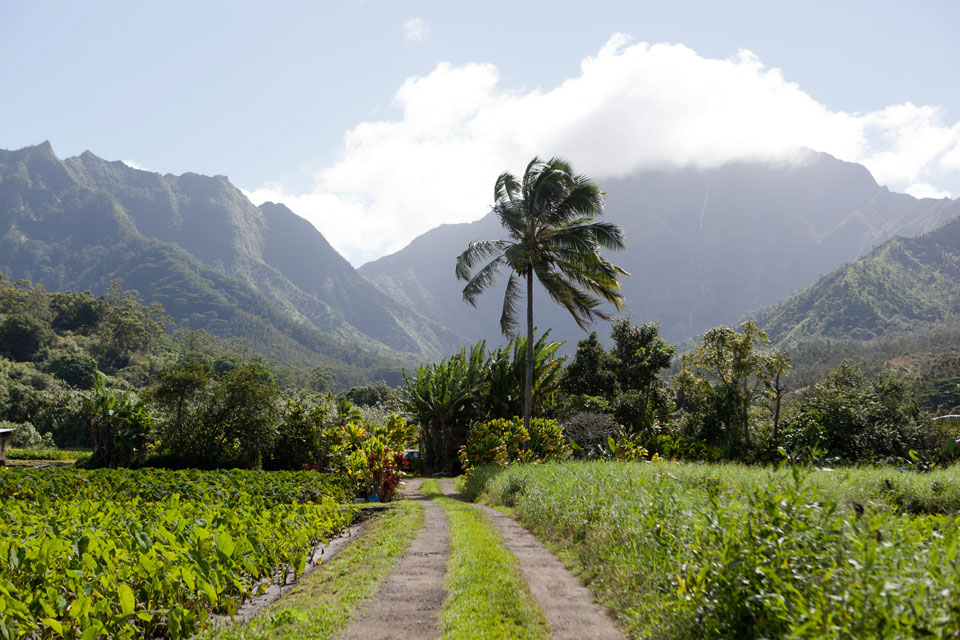
The first of a new generation of genetically modified crops is poised to win government approval in the United States, igniting a controversy that may continue for years, and foreshadowing the future of genetically modified crops.
The agribusiness industry says the plants—soy and corn engineered to tolerate two herbicides, rather than one—are a safe, necessary tool to help farmers fight so-called superweeds. The U.S. Environmental Protection Agency and Department of Agriculture appear to agree.
However, many health and environmental groups say the crops represent yet another step on what they call a pesticide treadmill: an approach to farming that relies on ever-larger amounts of chemical use, threatening to create even more superweeds and flood America’s landscapes with potentially harmful compounds.
Public comments on the Environmental Protection Agency’s draft review of the crops will be accepted until June 30. As of now, both the EPA and USDA’s reviews favor approval. Their final decisions are expected later this summer.
“We’re at a crossroads here,” said Bill Freese, a science policy analyst at the Center for Food Safety, an advocacy group. “With these, we’re dramatically increasing farmer dependence on herbicides.” In a letter to the USDA, the Center and 143 other public-interest and environmental groups warned of a “chemical arms race with weeds,” in which the new crops offer “at best temporary relief.”
The crops under consideration were engineered by Dow AgroSciences, a Dow Chemical Company subsidiary. They’re part of what Dow calls the Enlist Weed Control System: Enlist, a proprietary mixture of glyphosate and 2,4-D herbicides, and the plants onto which Enlist can be sprayed without causing them harm as it kills surrounding weeds.
A similar approach to designing solely glyphosate-tolerant crops—Monsanto’s Roundup Ready trait—has made glyphosate the most widely-used herbicide in the United States. Those crops now account for more than 80 percent of U.S. corn and cotton, and 93 percent of all American soybeans.
When Roundup Ready crops were first introduced in the 1990s, some scientists warned that weeds would eventually evolve tolerance to glyphosate: After all, any herbicide-hardy weed would have an enormous reproductive advantage. Monsanto said that wouldn’t happen. It did, sooner rather than later. Such weeds are now an enormous problem, infesting roughly 75 million acres of fields, an area roughly equivalent to the size of Arizona.
Farmers have been sent scrambling for solutions, and products like Enlist andsimilar multiple herbicide-resistant crops developed by other companies are the agriculture industry’s solution. “Enlist Duo herbicide will help solve the tremendous weed control challenges growers are facing,” said Damon Palmer, the U.S. commercial leader for Enlist, in a press release accompanying the EPA’s draft announcement.
According to Dow, weed resistance can be forestalled this time around. But critics say it’s inevitable, and that applying 2,4-D at the anticipated landscape scales could harm both humans and the natural environment. The companies consider those fears to be overblown and based on a biased interpretation of the science. That is also what critics say of them.
If there’s any common ground, it’s this: If the Enlist system is approved, much more herbicide will be used in the United States. According to the USDA, somewhere between 78 and 176 million pounds of additional 2,4-D could be used on U.S. crops by 2020, up from 26 million in 2011.
Herbicides and Health
Among the galaxy of chemicals found in agriculture and everyday modern life, 2,4-D is comparatively well-researched. Scores of studies over the last several decades have looked for population-level patterns linking exposures to human health problems, or described the effects on animals experimentally exposed to 2,4-D.
Considerable disagreement exists, however, on how to interpret that research. Critics of the 2,4-D resistant crops emphasize the population-level epidemiology, which raises cause for concern. Dow and the EPA place much more weight on results from laboratory animal exposures, from which the effects of anticipated human exposures are extrapolated.
Based on the animal research, “we have looked at the possibility that Enlist could be used on every acre of corn and soybeans and concluded there would be no human health risk from such use,” the EPA said in a statement provided to WIRED.
Their evaluation fits with the state of the science as described by Dow toxicologist and former Society of Toxicology president James Bus, who said that even farm workers who handle 2,4-D on a daily basis are exposed to levels “that are 1,000-fold below doses which in animals cause no effect.”
“Almost all the key toxicology studies are in the peer-reviewed public literature. They’re not hidden in company files,” said Bus, who described the misgivings of Enlist’s critics as resulting from a lack of familiarity with the literature, or giving too much credence to findings of harm that involved unrealistically high doses or impure 2,4-D formulations.
In turn, the Environmental Working Group, an environmental advocacy group, said in a June 4 letter to the EPA that the agency’s health reviews were flawed, incomplete and “significantly underestimate the real harm to human health.”
Broadly speaking, health concerns fall into two categories: whether 2,4-d might cause cancer, and whether 2,4-D might disrupt the human endocrine system, perhaps causing reproductive or neurological damage. on a possible link to cancer, most research suggests otherwise: Both the EPA and World Health Organization’s International Agency for Cancer Research have previously declared that 2,4-D does not appear to be carcinogenic to humans.
A more recent review of the epidemiology by two WHO cancer researchers did find a significant link between 2,4-D exposures and non-Hodgkins lymphoma. Dow’s own review of the epidemiology, published in Critical Reviews in Toxicology, found no connection.
On the risk of endocrine disruption, however, the science is more ambiguous. The EPA acknowledged in a 2005 evaluation of 2,4-D that, based on experimental effects on animal thyroids and gonads, “there is concern regarding its endocrine disruption potential.” But Bus pointed to a recent Dow-run study of rat exposures that figured prominently in the EPA’s evaluation and was published last September in the journal Toxicological Sciences. In those experiments, damage arose only at exposure levels far higher than is found in real-world settings.
Some research has pointed in a different direction, though. In a 2012 letter to the EPA, a group of 70 public health scientists and health professionals cited several population-level epidemiological studies that linked 2,4-D exposures and birth defects in several midwestern states.
Epidemiology shows statistical correlations, not cause-and-effect, and is necessarily messy: It can be hard to isolate one chemical’s signal from a sea of variable factors. on the other hand, epidemiology deals with real-world dynamics, and for 2,4-D resonates with some experimental observations. In a 2008Environmental Health article researchers wrote that “even though the evidence is sparse, some chlorophenoxy herbicides, in particular 2,4-D, have neurotoxic potentials and may cause developmental neurotoxicity.”
One of the study’s authors was environmental health professor Philippe Grandjean of the Harvard School of Public Health. Asked whether he still stood by that claim, Grandjean said that he does. “We know too little about the risks of developmental neurotoxicity” to dismiss concerns, he said.
A 2009 Archives of Neurology study also found suggestions of a link between 2,4-D exposures and Parkinson’s disease, though the number of cases was small. According to EPA, such reports will continue to be monitored as Enlist use is periodically reviewed, but may have resulted from older 2,4-D formulations that were contaminated by dioxin, an extremely toxic compound generated as a byproduct of 2,4-D manufacture.
Dioxin contamination is “no longer a factor in the modern manufacturing processes for 2,4-D,” said the EPA in its draft review. Again, critics are not reassured. “When you’re cooking it up, it’s inevitable that you’ll end up with dioxins being formed,” said Lynn Carroll, senior scientist at the nonprofit Endocrine Disruption Exchange.
A 2010 Environmental Science & Technology study by Australian toxicologists of dioxin contamination in 2,4-D found it to be an ongoing concern, though Enlist was not among the formulations evaluated. While buyers of Enlist seeds will be contractually obligated to use Dow’s reportedly cleaner formulations, Freese worries that farmers will evade those restrictions. “Based on general knowledge of enforcement of regulations in the field, it seems extremely likely that a lot of 2,4-D use will involve generic versions,” he said.

Environmental Impacts
In addition to possible human health impacts, many questions remain about the effects of 2,4-D on ecological health. In its statement to WIRED, the EPA said, “We are confident that there will be no off-site exposure to the choline salt of 2,4-D”—Dow’s new formulation—”that would be of concern for effects to plant or animals.”
But the agency’s own ecological risk assessment strikes a more uncertain tone: While stating that 2,4-D poses no direct poisoning threat to birds, fish, aquatic plants or insects, it noted a lack of empirical information about risks to mammals and terrestrial plants. “There is insufficient information to determine how the proposed new uses of 2,4-D choline salt will directly affect mammals … and terrestrial plants, and indirectly affect all taxonomic groups,” wrote the EPA’s ecologists.
That plants in areas adjacent to farm fields, or receiving soil-runoff water expected to contain 2,4-D, could be at risk seems self-evident: After all, 2,4-D is a herbicide, toxic to most plants that don’t have needles for leaves. “There are more and more concerns being raised about the drift problem,” said agroecologist Bruce Maxwell of Montana State University.
“These field edges are some of the last remaining harbors” of biodiversity in the midwestern United States, Maxwell said. They provide vital habitat and forage to many animals, in particular pollinators such as bees and butterflies, populations of which are in precipitous decline. The collapse of monarch butterflies has already been tied to the rise of glyphosate use.
The EPA’s draft review of Enlist, which emphasized the “practically non-toxic” direct effect of 2,4-D on bees, gave little weight to indirect effects, in part because the agency assumes farmers will use Enlist in ways that minimize its accidental spread beyond field edges. “If this product is used according to the label directions, no unreasonable adverse effects would result,” said the EPA in its statement.
It may be unreasonable, though, to expect farmers to always follow those directions, which include recommendations that Enlist not be sprayed closer than 30 feet to field edges, when wind is blowing above 2 and below 10 miles per hour, or when it’s too hot and dry. “Everyone knows these assumptions are unreal,” said Freese.
The Future of Superweeds
Such tensions between intentions and expediency are also evident in arguments over the potential for weeds to evolve in response to heavy 2,4-D and glyphosate use, just as they did in response to glyphosate alone.
According to Dow, this is unlikely, both because 2,4-D resistance is a relatively difficult trait for plants to acquire and because the company is committed to promoting growing practices—such as crop rotations and non-chemical weed control measures—that reduce selection pressures favoring herbicide-tolerant weeds.
Yet tolerance to 2,4-D has already been documented in several weed species that have elsewhere become glyphosate-resistant superweeds, including waterhempand horseweed. Particularly troubling, said Maxwell, is the existence of mutations that confer broad-spectrum herbicide tolerance. These could spread through weed populations much more rapidly than constellations of several mutations, each conferring a piecemeal defense.
Weeds that can survive doses of multiple herbicides have already been found—not 2,4-D and glyphosate, at least not yet, but the potential is clearly there. “Stacking up tolerance traits may delay the appearance of resistant weeds, but probably not for long,” concluded a recent Nature editorial, which also argued that real-world practicalities may preclude good intentions.
“A farmer making good money in the age of biofuel crop subsidies may be loath to switch to a different crop,” wrote Nature‘s editors. “And farmers may be hesitant to invest the money needed to properly manage weeds, when their farms could end up infested with weeds from less-assiduous neighbours.”
Herbicide resistance expert Pat Tranel of the University of Illinois said that multiple herbicide-resistant crops like Enlist could be useful tools for farmers, “but we’re concerned that, as with any new tool, it will be overused.”
Ideally, said Tranel, “we’d be using herbicides as part of a system, and using other strategies such as crop rotation and more-diversified cropping.” Indeed, research by Tranel’s colleague Adam Davis has demonstrated the industrial-scale potentialof such a balanced approach. But for now, said Tranel, “that’s not perceived as an economic alternative.”
The EPA’s draft assessment does not require farmers to rotate Enlist and non-Enlist crops. Instead, responsibility for slowing the rise of future superweeds is given largely to Dow. Farmers will be asked to scout their fields, reporting signs of Enlist-resistant weeds to Dow, which will investigate and decide whether to notify the EPA.
That raises obvious conflict-of-interest concerns, said Freese, citing as precedent Monsanto’s poor track record in monitoring the evolution of rootworm tolerance to genetically-engineered Bt corn. That was ultimately verified by independent academic researchers, not industry investigators. And even if Dow’s monitoring system is thorough, it may be insufficient.
“You can have the best surveillance system in the world, and the numbers are going to get you,” said Maxwell. “Resistance is going to be there. It will escape notice. And once it occurs at even a low, recognizable level, it’s going to continue to be there.”
Should that happen, the next logical step—at least from a commercial perspective—is to develop crops resistant to even more herbicides. Another of Dow’s soybean varieties, now being reviewed by the USDA, tolerates three herbicides; also in the regulatory pipeline are multiple herbicide-resistant crops from Monsanto and Syngenta, as well as crops that tolerate both herbicides and pesticides.
Freese pointed one of Dow’s patents, for a mechanism that would allow up to nine types of herbicide resistance to be engineered into a single plant. A patent claim is no guarantee that a technology will be used, but it may be an apt symbol for the near future of agricultural biotechnology.
“In the end, we’re going to render most of our chemical solutions obsolete,” said Maxwell. “In the meantime, unfortunately, we’re going to do some damage.”






















